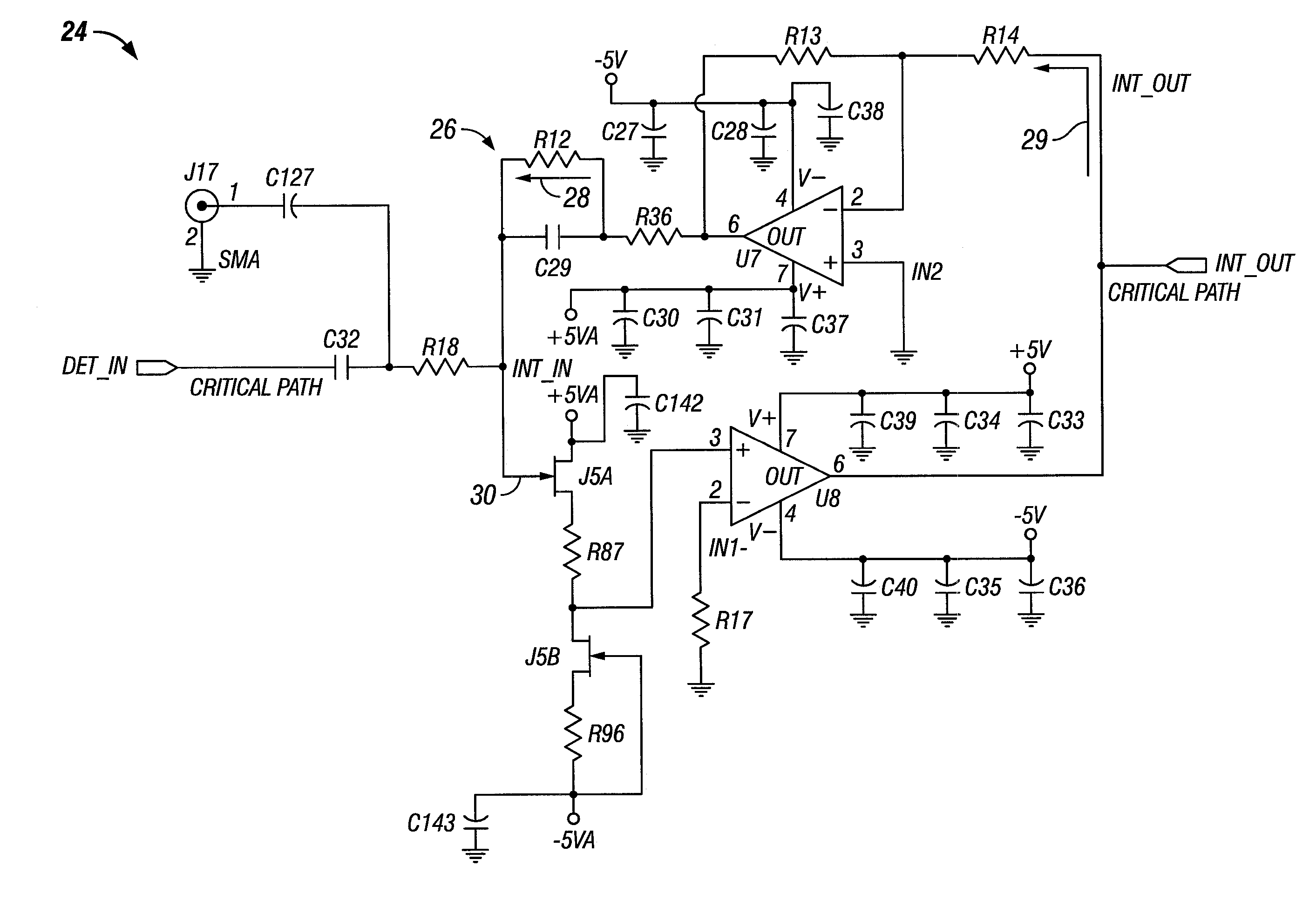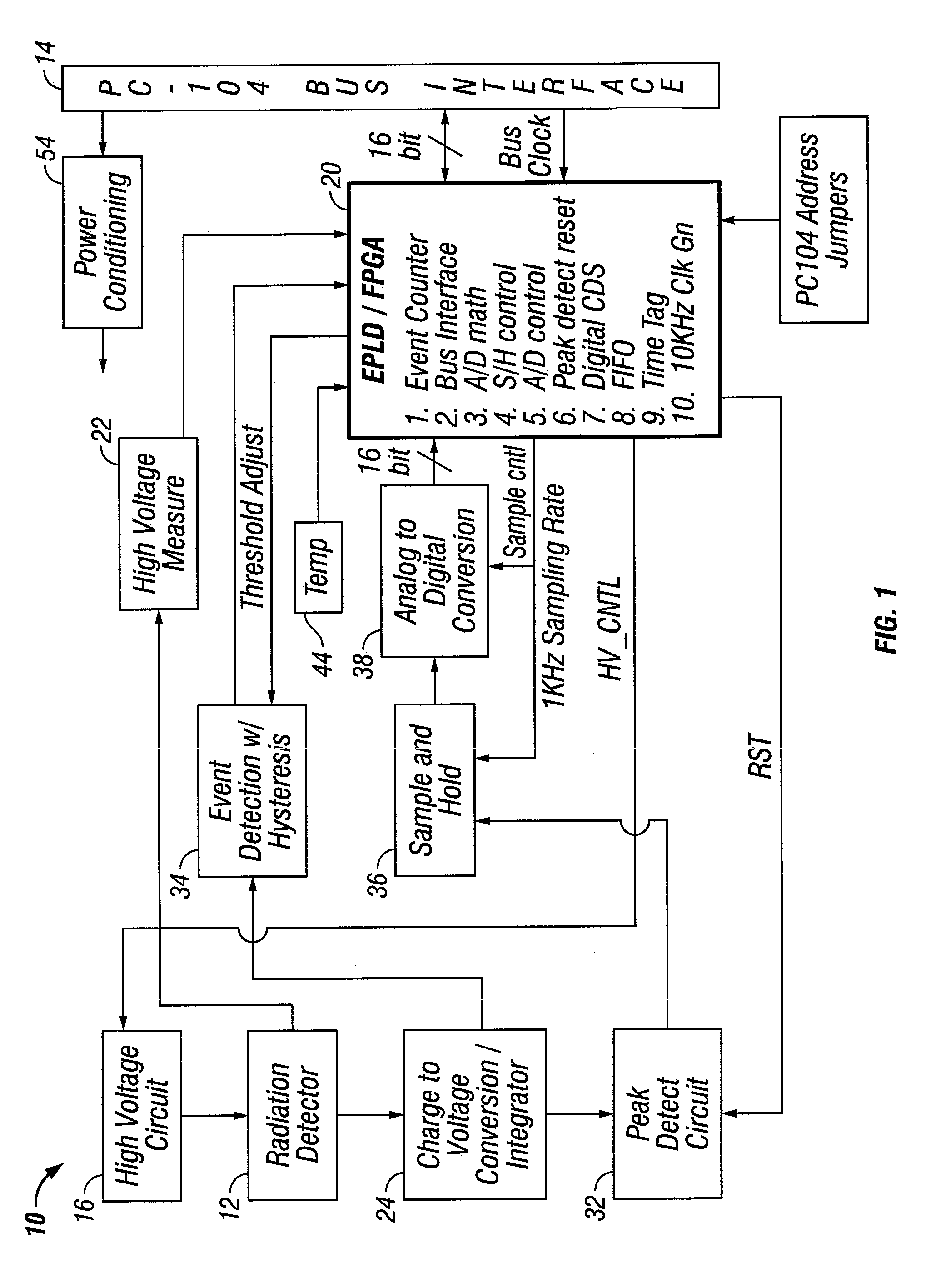Integrator circuitry for single channel radiation detector
- Summary
- Abstract
- Description
- Claims
- Application Information
AI Technical Summary
Benefits of technology
Problems solved by technology
Method used
Image
Examples
Embodiment Construction
[0086]Referring now to the drawings, and more particularly to FIG. 1, there is shown a block diagram for radiation detector circuit 10 in accord with one possible embodiment of the present invention. Radiation detector circuit 10 is programmable to operate with different radiation detectors and in a manner that is believed to improve operation of related art radiation circuits. Accordingly, radiation detector circuit 10 interfaces to radiation detector 12 and provides radiation events data to data bus 14 which may be a PC104 computer bus interface or other computer bus. Multiple radiation detector circuits 10 can be stacked together in a PC104, or other computer bus, bus stack to create a multiple detector system as indicated in FIG. 11.
[0087]Radiation detector circuit 10 may be programmed to operate with a wide range of different types of radiation detectors 12 by providing the high voltage and interfacing to detect the signal produced thereby. In one embodiment, the radiation dete...
PUM
 Login to View More
Login to View More Abstract
Description
Claims
Application Information
 Login to View More
Login to View More - R&D
- Intellectual Property
- Life Sciences
- Materials
- Tech Scout
- Unparalleled Data Quality
- Higher Quality Content
- 60% Fewer Hallucinations
Browse by: Latest US Patents, China's latest patents, Technical Efficacy Thesaurus, Application Domain, Technology Topic, Popular Technical Reports.
© 2025 PatSnap. All rights reserved.Legal|Privacy policy|Modern Slavery Act Transparency Statement|Sitemap|About US| Contact US: help@patsnap.com



